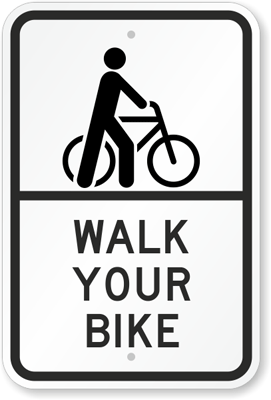Education programs may be the ticket to avoiding bike accidents and traffic fines
After the NYPD’s crackdown on bicycle traffic violations engineered by Operation Safe Cycle, cyclists complained that the wrong offenses were being targeted, and there was no effort to educate the city’s thousands of bikers (via Transportation Nation).
There’s nothing like taking a leisurely bike ride and then being slapped with a $270 ticket! Although, these days, riding your bike in the city is anything but leisurely. According to Transportation Nation, the number of cyclists in New York has quadrupled in the past decade, and the increase of bike aficionados has spurred an increase of tickets for cycling-related mishaps. In 2011, the NYPD issued 48,556 summonses to cyclists, or approximately 133 tickets a day. So far, 2012 has seen 35,726 bike summons issued in New York.
What could be the cause of such jarring statistics for legal actions regarding bikes? Brooklyn’s Prospect Park West Bike Lane invoked a series of legal discussions about efforts to install new bike lanes, which went hand-in-hand with police crackdowns on wayward cyclists. Operation Safe Cycle, a community initiative by the NYPD, was designed in January of 2011 to increase efforts for policing bike riders. One counteractive argument was that the program needed to focus on education when bikers, like pedestrians, became used to ignoring traffic regulations.
Police are shifting their focus from ticketing cyclists who run red lights to those who illegally ride their bikes on the sidewalk, where bikes must be walked in order to protect pedestrians (via Bicyclesigns.com).
Some of the major causes for ticketing were running red lights, riding the wrong way down streets, and the biggest complaint: riding on the sidewalk. “…Out of our 35,726 bicycle summonses thus far in 2012, 22,297 have been for bicycles on the sidewalk,” said NYPD police officer Brian McCarthy. “You have to be able to walk on the sidewalk and not dodge someone. Literally.”
Though bike ticketing is aggravating, the intent of proactive enforcement is ultimately to keep the public and cyclists safe. McCarthy stated that bicycle accidents in the New York metro area are up by 2.7 percent. The 90th precinct, covering Williamsburg and surrounding areas, was the location for 113 cyclist accidents. Central Park is in second place, with 98 accidents so far this year, 91 of them involving a motor vehicle hitting a bike, and 7 of them when a bike hit a pedestrian.
NYC has added over 250 miles of bike lanes since 2006, but bike accidents are still on the rise.
Police patrol or not, biking is still a cultural phenomenon in New York, especially given the city’s young, eco-conscious demographic and number of sidewalks. Luckily, according to McCarthy, more cyclists have reportedly only received warnings and handed educational pamphlets for a kinder and more focused approach. The pamphlets are filled with the rules of the road and tips for safe cycling.
Visual aids are another regulatory method that may help decrease both ticketing and accidents. Though it’s imperative that signage indicates that drivers are aware of bikes, bikes also need road rule reminders. City enforcers, bikers, and pedestrians can get have come up with creative campaigns, utilizing bike stencils, spray paint, and even haikus.
While motor vehicles need reminders to look out for hard-to-see cyclists, cyclists also benefit from visual cues citing traffic hazards and regulations (via Bicyclesigns.com).
The Department of Transportation is developing a commercial cyclist education campaign to be enforced next year. Spreading caution and awareness for cyclists and drivers alike helps reinforce safety procedures and protects everyone who uses the New York City roads and sidewalks. Cyclists can still get their bike on, but this way they’re smarter about it.
-S. Sridhar
Related Posts
Category: News, Regulations





















